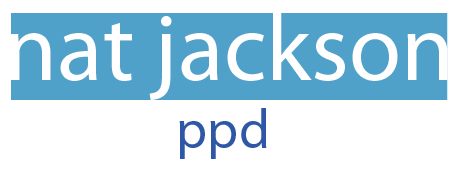
Monday, 22 March 2010
Monday, 1 March 2010
IN DESIGN:
The Brief:
Page layout- Subject matter= Pav
Considerations:
- Layout
- Colour
- Images
- Type
Target Audience:
People who enjoy listening to music, perhaps student lifestyle.
Tone of Voice:
Fun and light hearted, laid back= reflects Pav
Background:
Interview with Pav: In sketchbook
Mandatory Requirements:
A3 double page spread
Research sheets
Deliverables:
A3 double page spread
Studio Deadline:
27th May 2010
Tuesday, 23 February 2010
VISUAL LANGUAGE:
ISSUES RAISED:
Are the letters from computer or handwritten- perhaps more interesting coming from hand.
Different materials used to write the letter, pen, paint, chalk etc...
Size of the letter.
What stock?
- Coloured stock, as the background won't change colour
ACTION TO BE TAKEN:
Get people to write the letter A.
Use illustrator to trace over and create pattern.
Then make negative images for the screen print.
Find out when drop in is.
GENERAL FEEDBACK:
What colours will be used. How many?
BOOK- rationale
Brief:
Letter AYY!
How to convey it?
Colour
Who needs to know? :
Anyone that is interested
What do they need to know? :
The letter 'A'
What will they respond to? :
Aesthetically entertain. By colour and pattern
What research is required? :
Primary: Stock- what works best.
Secondary: Other books, by designers
Monday, 15 February 2010
1. What skills have you developed through this module and how effectively do you think you have applied them?
My reading skills, as Ihave done quite alot of reading for finding facts. Also, working with the public to ask their opinions, I think I have built up a bit of confidence to do that.
I have worked with the dog fold book, and I think that I have got more knowledge of what works and doesn't work with the book.
2. What approaches to/methods of research have you developed and how have they informed your design development process?
Reading up on facts and the history of punk, so secondary research. Also primary research with what type of book to use for final piece. With experiment to folding and what form.
3. What strengths can you identify in your work and how have/will you capitalise on these?
I think the idea itself has some strength to it. But I think that I could also improve on it.
4. What weaknesses can you identify in your work and how will you address these more fully?
I think if I experimented more with the stock, I would have been able to get a better quality to my final piece. I would have liked the book be be printed on, rather than have stuck paper to it.
So I need to work on my time management to make sure that I organise my time better, in order to appoint time to printing.
5. Identify five things that you will do differently next time and what do you expect to gain from doing these?
- Stay in the studio longer: much more work will be done!
- Get a plan sorted: organise time, make sure I know what I'm doing when.
- Work more in sketchbook: So the work I plan is all in one place, and isn't getting messed up.
- More experimentation with material: Doing so might improve my final piece.
- Organise my time better: Will get more done.
6.How would you grade yourself on the following areas:
5= excellent, 4 = very good, 3 = good, 2 = average, 1 = poor
Attendance: 3
Punctuality: 4
Motivation: 2
Commitment: 3
Quantity of work produced: 2
Quality of work produced: 3
My reading skills, as Ihave done quite alot of reading for finding facts. Also, working with the public to ask their opinions, I think I have built up a bit of confidence to do that.
I have worked with the dog fold book, and I think that I have got more knowledge of what works and doesn't work with the book.
2. What approaches to/methods of research have you developed and how have they informed your design development process?
Reading up on facts and the history of punk, so secondary research. Also primary research with what type of book to use for final piece. With experiment to folding and what form.
3. What strengths can you identify in your work and how have/will you capitalise on these?
I think the idea itself has some strength to it. But I think that I could also improve on it.
4. What weaknesses can you identify in your work and how will you address these more fully?
I think if I experimented more with the stock, I would have been able to get a better quality to my final piece. I would have liked the book be be printed on, rather than have stuck paper to it.
So I need to work on my time management to make sure that I organise my time better, in order to appoint time to printing.
5. Identify five things that you will do differently next time and what do you expect to gain from doing these?
- Stay in the studio longer: much more work will be done!
- Get a plan sorted: organise time, make sure I know what I'm doing when.
- Work more in sketchbook: So the work I plan is all in one place, and isn't getting messed up.
- More experimentation with material: Doing so might improve my final piece.
- Organise my time better: Will get more done.
6.How would you grade yourself on the following areas:
5= excellent, 4 = very good, 3 = good, 2 = average, 1 = poor
Attendance: 3
Punctuality: 4
Motivation: 2
Commitment: 3
Quantity of work produced: 2
Quality of work produced: 3
Subscribe to:
Posts (Atom)




